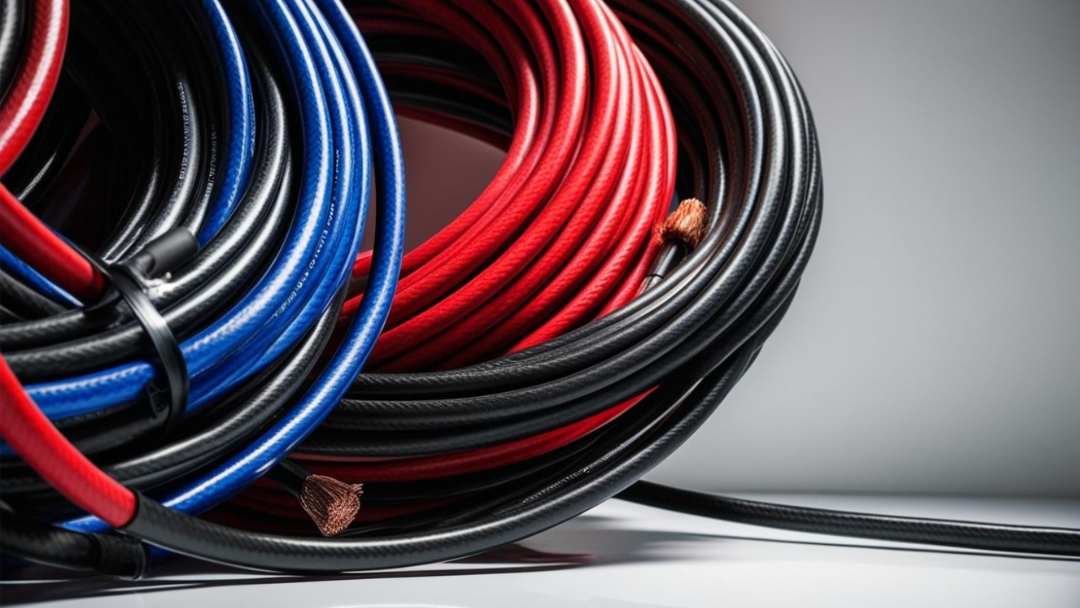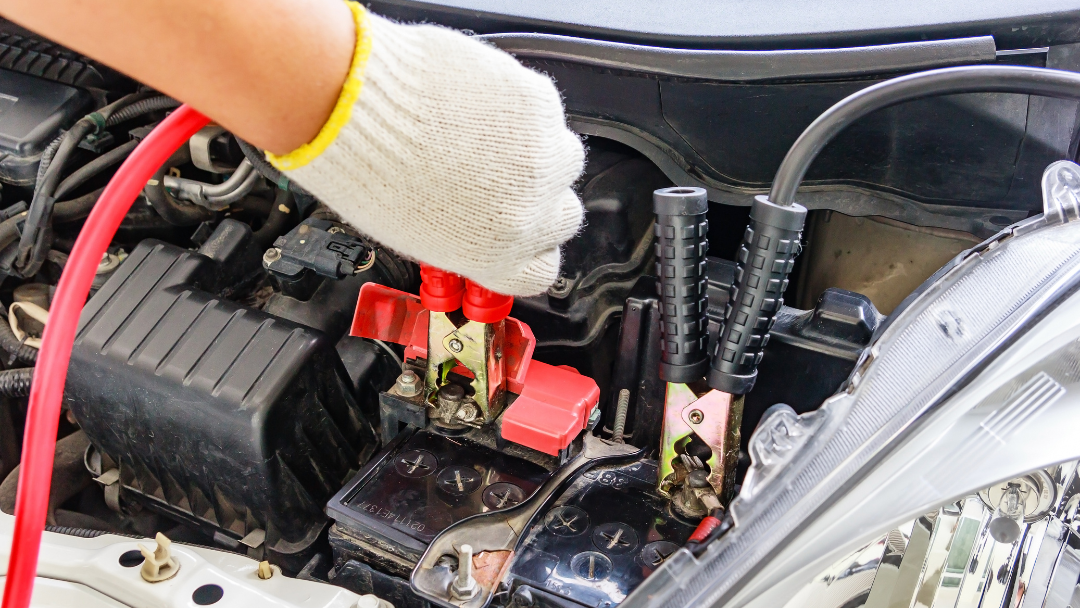Whether you're a restoration hobbyist or an experienced mechanic, automotive cables play a crucial role in vehicle performance and safety. In a nutshell, they enable reliable power delivery between key components, such as the battery, starter motor and engine control unit.
Need help choosing the right automotive cables for your project? Keep reading as we break down the different types and their most common applications.

Types of automotive cables
The first step in any successful automotive project is choosing the right cables. Do you need silicone wires to handle high temperatures near the engine or exhaust? Or flexible, thin-walled cables to route around moving parts?
Selecting the correct cable ensures reliable performance and long-term safety. Below, we’ve outlined the most common types to help you make an informed decision.
Battery and welding cables
Battery and welding cables are heavy-duty electrical cables designed for high-current applications, such as connecting a vehicle’s battery to the starter motor.
Battery cables are typically made from medium-stranded copper conductors and insulated with PVC or XLPE, which offer good thermal stability and chemical resistance. In contrast, welding cables use ultra-fine-stranded copper for enhanced flexibility and are insulated with durable rubber compounds like EPDM.
Thin-wall cables
Thin-wall cables have less insulation than standard cables, making them lighter and more compact. Thanks to their fine-to-medium-stranded copper (or tinned copper) conductors, they're flexible enough to route around complex components with ease.
Keep in mind that thin-wall cables are designed for low-to-moderate voltage applications rather than heavy-duty power delivery.
PVC cables
PVC cables are insulated with polyvinyl chloride – a durable thermoplastic that's chemically stable, moderately flexible and resistant to impact and abrasion.
Thanks to its affordability and all-around performance, PVC is a go-to choice for low-to-medium voltage applications where extreme heat isn't a concern.
Silicone cables
Silicone cables are, hands down, the best choice for high-temperature environments, such as near the engine and exhaust. As well as being flame- and heat-resistant, silicone rubber is brilliantly flexible even in cold conditions.
You’ll typically find silicone cables in performance cars and electric vehicles, where thermal management is critical.
Multi-core cables
Multi-core cables do exactly what they say on the tin – carry multiple signals through individual insulated wires, known as "cores". These are bundled together within a single cable and neatly wrapped in a protective PVC or XLPE outer sheath.
They're most commonly used in internal electronic systems.
Related reading: Cable Ties Buyer’s Guide
Common applications
It’s essential to match the cable type to the vehicle's system for optimal results. Check out the table below for common applications.
|
Cable Type |
Common Applications |
|---|---|
|
Battery and Welding Cables |
Starter motor circuits, Alternator connections, Battery-to-chassis grounding |
|
Thin-wall Cables |
Lighting systems, Dashboards, Audio systems |
|
PVC Cables |
Climate control systems, Power for accessories, Charging ports |
|
Silicone Cables |
Engine bay wiring, Electric and hybrid vehicles, Exhaust and turbocharger areas |
|
Multi-core Cables |
Infotainment systems, Door lock systems, Airbag wiring |
Battery and welding cables
- Starter motor circuits – Deliver current from the battery to the starter motor
- Alternator connections – Carry charging current from the alternator to the battery
- Battery-to-chassis grounding – Provide a solid ground connection to complete the vehicle’s electrical circuit
Thin-wall cables
- Lighting systems – Interior and exterior lights
- Dashboards – Easier to route through tight spaces behind the dashboard
- Audio systems – Compact wiring for internal electronics and multimedia
PVC cables
- Climate control systems – Including blower motors and sensors
- Power for accessories – Power interior features like electronic windows
- Charging ports – Such as USB ports and auxiliary power outlets
Silicone cables
- Engine bay wiring – Cables must withstand high temperatures
- Electric and hybrid vehicles – Thermal regulation is critical
- Exhaust and turbocharger areas – Require heat- and flame-resistant materials
Multi-core cables
- Infotainment systems – Connect multiple controls within the dashboard
- Door lock systems – Package motors and switches in a single cable
- Airbag wiring – Combine sensors, controllers and deployment modules

Related reading: Cable Ties, Tape & Consumables in the Automotive Sector
Browse durable automotive cables today
If you're searching for quality automotive cables that optimise safety and performance, you're in the right place. We stock a comprehensive range of cables for the automotive and marine industries – just remember, matching the right cable to the vehicle system is key for the best results.


